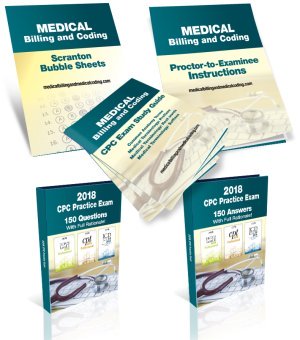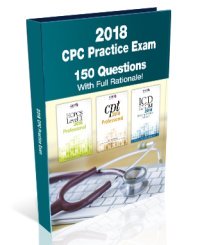PROCEDURE: Left heart catheterization, selective coronary angiography, bypass graft angiography with complex percutaneous intervention attempt of the vein graft to the diagonal.
.
HISTORY OF PRESENT ILLNESS: The patient is a 64-year-old insulin-dependent diabetic, hypertension, dyslipidemia, CAD, previous CABG, previous PCI, presenting with progressive symptoms of chest pain and angina. With high pretest probability despite maximal medical therapy, he is referred for angiography.
.
CONSENT: Informed consent was obtained. The patient understood the risks, benefits and alternatives of the procedure and agreed to proceed with the procedure.
.
DESCRIPTION OF PROCEDURE: The right groin was prepped in the usual sterile fashion and 2% lidocaine was infused subcutaneously until adequate anesthesia was obtained. Right common femoral artery was accessed using modified Seldinger technique. A 6 French 11 cm sheath was placed without complication. Diagnostic 6-French JL4 and JR4 catheters as well as an IMA catheter was used for coronary angiography, left heart catheterization and bypass graft angiography. At the conclusion of the procedure, manual compression was used for arterial hemostasis.
.
FINDINGS:
HEMODYNAMICS: Left ventricular end-diastolic pressure measured 16 mmHg. There was no transaortic gradient on pullback.
.
CORONARY ANGIOGRAPHY:
LEFT MAIN: Had a patent stent with mild disease leading into an LAD that was totally occluded. LEFT ANTERIOR DESCENDING: The distal LAD was seen fed from a patent IMA graft with mild diffuse disease. There was a small second diagonal visualized with mild diffuse disease. The first diagonal was seen imaged from a patent vein graft that was severely diseased at the anastomosis. The distal aspect of the diagonal had mild diffuse disease. LEFT CIRCUMFLEX: Had patent stent seen in the proximal portion. There was mild disease leading into a patent stent in the first marginal. There was a lower-lying second marginal that had mild diffuse disease. RIGHT CORONARY ARTERY: Totally occluded proximally. The distal vessel was fed by a patent vein graft. It was a dominant vessel with a prominent-sized RPDA system with mild diffuse disease. However, leading into the RPDA system, there was a 90% proximal and ostial stenosis. This was visualized through the vein graft to the RCA.
.
The vein graft to the circumflex system was known to be occluded and not injected. The vein graft to the diagonal had moderate disease with evidence of a stent at the anastomosis that had 99% in-stent restenosis with only TIMI 2 flow. The vein graft to the RCA was patent with only mild disease. The LIMA to LAD was selectively injected, was patent with mild disease.
.
SUMMARY: Severe multivessel coronary artery disease with patent stents seen in the LAD and left circumflex system. There were 3/4 patent bypass grafts. However, the bypass graft to the diagonal had high-grade in-stent restenosis at the anastomosis. Severe native RPL disease.
.
Based on the patient’s clinical presentation and angiographic findings, it was elected to proceed with angioplasty of the vein graft to the diagonal.
.
INTERVENTION: Angiomax was used for effective anticoagulation and a JR4 guide was used to intubate the vein graft to the diagonal. Initially, a Runthrough wire was attempted; however, it would not traverse the lesion, and therefore a Pilot wire was able to traverse the lesion and was placed distally. Multiple attempts to pass balloons, either a 2.0 as well as a 1.5 balloon, were unsuccessful, and a Godzilla guide liner was then applied and was able to deep seat within the vein graft to allow initial placement of a 1.5 Apex balloon. This was expanded to 10 atmospheres. However, a subsequent balloon was not able to traverse the high-grade lesion. TIMI flow was reestablished, a TIMI 3 flow. However, with inability to pass a balloon, the procedure was abandoned. There was residual 99% stenosis.
.
SUMMARY: Unsuccessful balloon angioplasty of the vein graft to the diagonal.
.
In light of the complexities with the above-stated procedure, the intervention to the RPL lesion via the vein graft to the RCA will be deferred and achieved in a staged fashion. Due to complexities with hemostasis at the access site, manual compression will be applied, and the patient will be admitted for observation.
.
So my question is do I use a Modifier on the angioplasty 92937? Never had this happen before Thank you Nancy
.
HISTORY OF PRESENT ILLNESS: The patient is a 64-year-old insulin-dependent diabetic, hypertension, dyslipidemia, CAD, previous CABG, previous PCI, presenting with progressive symptoms of chest pain and angina. With high pretest probability despite maximal medical therapy, he is referred for angiography.
.
CONSENT: Informed consent was obtained. The patient understood the risks, benefits and alternatives of the procedure and agreed to proceed with the procedure.
.
DESCRIPTION OF PROCEDURE: The right groin was prepped in the usual sterile fashion and 2% lidocaine was infused subcutaneously until adequate anesthesia was obtained. Right common femoral artery was accessed using modified Seldinger technique. A 6 French 11 cm sheath was placed without complication. Diagnostic 6-French JL4 and JR4 catheters as well as an IMA catheter was used for coronary angiography, left heart catheterization and bypass graft angiography. At the conclusion of the procedure, manual compression was used for arterial hemostasis.
.
FINDINGS:
HEMODYNAMICS: Left ventricular end-diastolic pressure measured 16 mmHg. There was no transaortic gradient on pullback.
.
CORONARY ANGIOGRAPHY:
LEFT MAIN: Had a patent stent with mild disease leading into an LAD that was totally occluded. LEFT ANTERIOR DESCENDING: The distal LAD was seen fed from a patent IMA graft with mild diffuse disease. There was a small second diagonal visualized with mild diffuse disease. The first diagonal was seen imaged from a patent vein graft that was severely diseased at the anastomosis. The distal aspect of the diagonal had mild diffuse disease. LEFT CIRCUMFLEX: Had patent stent seen in the proximal portion. There was mild disease leading into a patent stent in the first marginal. There was a lower-lying second marginal that had mild diffuse disease. RIGHT CORONARY ARTERY: Totally occluded proximally. The distal vessel was fed by a patent vein graft. It was a dominant vessel with a prominent-sized RPDA system with mild diffuse disease. However, leading into the RPDA system, there was a 90% proximal and ostial stenosis. This was visualized through the vein graft to the RCA.
.
The vein graft to the circumflex system was known to be occluded and not injected. The vein graft to the diagonal had moderate disease with evidence of a stent at the anastomosis that had 99% in-stent restenosis with only TIMI 2 flow. The vein graft to the RCA was patent with only mild disease. The LIMA to LAD was selectively injected, was patent with mild disease.
.
SUMMARY: Severe multivessel coronary artery disease with patent stents seen in the LAD and left circumflex system. There were 3/4 patent bypass grafts. However, the bypass graft to the diagonal had high-grade in-stent restenosis at the anastomosis. Severe native RPL disease.
.
Based on the patient’s clinical presentation and angiographic findings, it was elected to proceed with angioplasty of the vein graft to the diagonal.
.
INTERVENTION: Angiomax was used for effective anticoagulation and a JR4 guide was used to intubate the vein graft to the diagonal. Initially, a Runthrough wire was attempted; however, it would not traverse the lesion, and therefore a Pilot wire was able to traverse the lesion and was placed distally. Multiple attempts to pass balloons, either a 2.0 as well as a 1.5 balloon, were unsuccessful, and a Godzilla guide liner was then applied and was able to deep seat within the vein graft to allow initial placement of a 1.5 Apex balloon. This was expanded to 10 atmospheres. However, a subsequent balloon was not able to traverse the high-grade lesion. TIMI flow was reestablished, a TIMI 3 flow. However, with inability to pass a balloon, the procedure was abandoned. There was residual 99% stenosis.
.
SUMMARY: Unsuccessful balloon angioplasty of the vein graft to the diagonal.
.
In light of the complexities with the above-stated procedure, the intervention to the RPL lesion via the vein graft to the RCA will be deferred and achieved in a staged fashion. Due to complexities with hemostasis at the access site, manual compression will be applied, and the patient will be admitted for observation.
.
So my question is do I use a Modifier on the angioplasty 92937? Never had this happen before Thank you Nancy





